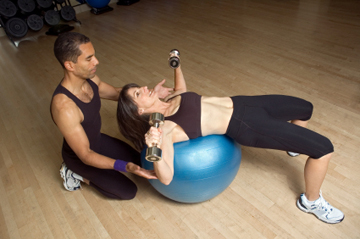Total Therapy Blog
Training Principles… Circuit Training
 Summer is fast approaching (although it doesn’t feel like it…)! But none-the-less, we have a new short series for those who are looking to get back into shape for the summer but don’t know where to start. There are numerous different training principles out there that you can follow, but which one is suitable for you? Last week, we began the topic of Training Principles. The first technique we talked about was Interval Training. This week, we explain the technique that we use in our Core Classes – Circuit Training.
Summer is fast approaching (although it doesn’t feel like it…)! But none-the-less, we have a new short series for those who are looking to get back into shape for the summer but don’t know where to start. There are numerous different training principles out there that you can follow, but which one is suitable for you? Last week, we began the topic of Training Principles. The first technique we talked about was Interval Training. This week, we explain the technique that we use in our Core Classes – Circuit Training.
Circuit training is a training method that brings strength training and aerobic training together into one great routine. This is especially good for clients who aren’t big on doing “cardio” at the gym.
Circuit training is just what it sounds like: training in a circuit. In fact, it’s an exercise technique we use in our core classes here at Total Therapy! You select anywhere between 6-8 exercises (for our core classes, we use 6 exercises), and perform each exercise for either a pre-determined time period or number of repetitions. Some of these exercises may use the same muscle groups, but exercises that use the same muscle group (i.e. bench press and push ups) should not be done back-to-back.
 Why do it this way? The goal of circuit training is to strength train at a high heart rate. The exercises you select are done consecutively without rest, so that your heart rate is constantly elevated. However, by not using the same muscles back-to-back, you “rest” each muscle group while you exercise another (e.g. push-ups followed by squats). After you complete one full circuit, you can take a brief rest and then repeat the circuit again. If you try to do a bench press followed by a push up, the muscles in your chest will not be very happy! You can also add a few “cardio” stations into your circuit, to ensure that you’re keeping your heart rate up. Examples include toe taps on a medicine ball, jumping jacks, step ups, or agility ladder exercises.
Why do it this way? The goal of circuit training is to strength train at a high heart rate. The exercises you select are done consecutively without rest, so that your heart rate is constantly elevated. However, by not using the same muscles back-to-back, you “rest” each muscle group while you exercise another (e.g. push-ups followed by squats). After you complete one full circuit, you can take a brief rest and then repeat the circuit again. If you try to do a bench press followed by a push up, the muscles in your chest will not be very happy! You can also add a few “cardio” stations into your circuit, to ensure that you’re keeping your heart rate up. Examples include toe taps on a medicine ball, jumping jacks, step ups, or agility ladder exercises.
By maintaining an elevated heart rate during exercise, your cardiovascular system (the system that is responsible for getting blood to your muscles) is challenged. In contrast, traditional strength training regimes focus on completing one set of repetitions, and then resting. This method is not incorrect or bad for you (in fact, it is more effective for those wishing to build muscle mass) but it does not provide the aerobic benefits that circuit training does.

When some people perform circuit training, they may choose to use a technique called super setting. It is very similar to circuit training, but instead of performing 6-8 exercises without rest, you rotate between 2-3 exercises. Similar to circuit training, each “package” of exercises focuses on different muscle groups (e.g. standing biceps curls followed immediately by lying triceps extensions). Instead of resting between sets, you immediately do a different exercise, letting the worked muscle “rest” while you work a different group. In one workout, you might typically do 2-3 grouped super sets in one workout (totaling 6-9 different exercises done during each workout). In this scenario, you would end up doing around the same number of exercises as in a circuit.
Finally, it is important to keep in mind that circuit training, super setting, and the other techniques we’ve discussed (interval training and training in your target heart rate) are NOT directed towards a rehabilitation population. If you are in the rehabilitation stage, talk to your health care practitioner before trying any of these techniques on your own.
What do you do for your workout routines? Do you have any training techniques you could share with us?








Follow Us!
& Stay Up To Date
BLOG